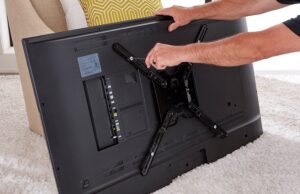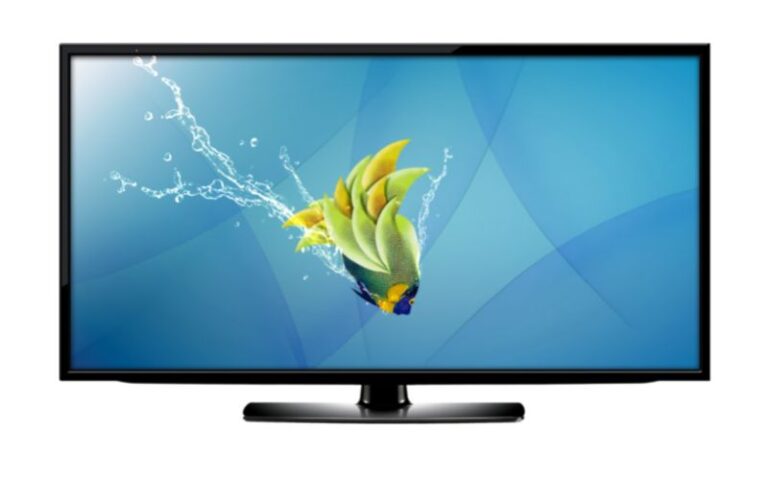Can A TV Antenna Be Used For Radio? (Read This First)
Do you own a TV antenna and consider it a bother to mount an additional one for your FM radio?
Having different antennas on your roof may not be so aesthetically pleasing. Antennas intercept signals from transmitters to allow you to enjoy different TV and radio stations.
However, whether you plan to reduce the number of antennas on your roof or you want to save money, using a TV antenna for your radio might be ideal.
You can use your TV antenna to receive radio signals. However, not all types of TV antennas can receive radio signals. For example, if your TV antenna has FM traps, it will stop the flow of FM signals to your radio. Also, if your TV antenna only receives UHF signals, it might not transfer stable signals to your radio.
In this article, I will explain how you can use your TV antenna to receive radio signals, the type of antenna you need, and the requirements to set up your radio antenna.
By the end of the article, you will also learn how to make your radio antenna.
Can You Use a TV Antenna on a Radio?

You can use a TV antenna to receive signals from your radio. Moreover, you have to check if your antenna can receive VHF reception to verify if the TV antenna can receive radio signals.
To use a TV aerial for your radio, you also have to inspect your TV antenna for FM traps. These FM traps serve as a blockage for radio signals.
Consequently, check your TV antenna’s manual for instructions on its use. If there is no mention of an FM trap in your TV antenna, then it probably does not have one.
Moreover, the type of frequencies transferred in your TV and radio antenna are pretty different. Radio signals broadcast Very High Frequency (VHF) signals.
On the other hand, TV aerials use Ultra High Frequency (UHF) signals. This difference implies that the antenna you use for your TV and radio reception is dissimilar.
However, it does not mean that your TV aerial will not intercept these radio signals.
Simply placing the antenna in a high place, like your roof, will cause the antenna to pick other frequencies naturally.
Therefore, a radio frequency might show up close by if you place your TV aerial in the right place, like a high area like your roof.
When your TV antenna detects the radio signal, there is a high chance your TV aerial will intercept the radio signals.
The signal might be lower than a radio antenna would otherwise receive.
TV and radio aerials might have similar functions, but there are several differences in their capabilities and purpose.
However, having a good idea of the difference between TV and radio antennas will help you select the suitable aerial for your needs.
Here are some detailed comparisons between a TV antenna and a radio antenna
How They Work
TV antennas intercept broadcast frequencies in VHF or sometimes UHF signals. Some TV broadcast channels only use UHF signals, while some still use VHF broadcasts.
Therefore, most TV aerials intercept UHF and VHF signals.
On the other hand, radio antennas pick signals from radio stations. These stations transmit VHF broadcasts or signals slightly lower than the VHF signals.
Size and Design
The wavelength of the signal that intercepts both TV and radio signals determines the size and design of their aerials.
TV antennas are quite small, though efficient. The signals that TV stations have a higher frequency; hence, does not require long aerial receivers.
Due to the short wavelengths TV channels broadcast, you will only require short antennas for your TV.
Radio signals, however, transmit VHF and FM signals. Unlike the UHF signals, these frequencies have long wavelengths, requiring longer antennas.
The longer your receiving antenna, the more radio signals it will receive and process.
Table Showing the Difference Between a TV Antenna and a Radio Antenna
| TV Antenna | Radio Antenna |
|---|---|
| Receives Ultra High Frequency (UHF) and Very High Frequency (VHF) | Receives only Very High Frequency (VHF) |
| Requires short antenna length | Requires long antenna length |
| Transmits short wavelength | Transmits long wavelength |
| You can install the antenna inside or outside your home | You can only install the antenna outdoors |
What Type of Antenna Is Needed on a Radio?
The type of antenna needed for a radio varies with the kind of radio you need the antenna for.
For a small radio, you will need a handheld radio antenna or a whip antenna.
Whether you need a new antenna or an FM radio, you must ensure your antenna gets a considerable range when receiving frequencies from your favorite radio stations.
However, there are factors you need to consider before selecting the antenna you need for your radio.
Some of these factors include;
Impedance
Before purchasing your radio antenna, you have to ensure that the compatibility between your radio and the antenna matches.
Hence, you should confirm the impedance value of the antenna to ensure it matches that of your radio.
Fortunately, most FM antennas have 75 ohms impedance which is the right measurement for most radios.
Cable Length
Installing the right cable length is important to get the most out of your radio antenna.
You also need to ensure to install the antenna in the right location, as this will determine the quality of reception you will get.
Frequency Range
Since radios use wireless frequencies, ensuring that your radio works with a wide range of signals is essential.
Consider frequencies like 80-100 MHz, 90-120 MHz, and other higher frequencies with higher ranges.
With these consideration factors, here are the types of antenna needed for a radio:
Whip
You can find this type of antenna on mobile radios. It receives both VHF and UHF aerial bands.
Rubber ducky
This type of antenna is more common in mobile two-way radios due to its compactness. It also contains a short wire helix.
The wire helix is an inductor in the radio that cancels any capacitive reactance and makes the frequency resonant.
Other types of Radio Antenna include:
- Handheld radio antennas
- Manpack Radio antennas
- Vehicular antennas
- LMR and PMR antennas
How Do You Make a Homemade Radio Antenna?
To make your homemade radio antenna, you need to calculate the necessary measurements for the wire, cut the wire accordingly, and connect the wire to your audio receiver.
You will need a ⅜ inch of copper tubing, a wire cutter, a hacksaw, and soldering equipment.
When you are far from a radio broadcast station, receiving a good signal from the station might be difficult.
In this case, you might undergo additional processes to modify the signal to receive a better connection.
Creating your FM antenna is one of the best alternatives if you are ready for some technical work.
Below are two different and economical ways of creating antennas that will give you the best signals in a cost-efficient way.
Making Antenna With a Coaxial Cable
To make your antenna using this method, you will need the following;
- 50 or 75 ohms coaxial cable with copper shell
- Wire cutters
- A radio receiver with a connector
- Hacksaw
- ⅜-inch copper tube
- Soldering equipment
Follow the steps below to make your homemade antenna:
Step 1: Measure Your Antenna Length and Cut an End of the Coaxial Wiring
By taking antenna measurements, you can determine how much coaxial wiring you will need and your copper tube length.
To measure the length, divide 456 by the approximate rate or frequency you plan to connect. Next, divide the result by two and multiply by 12 inches.
After calculating, cut off one end of the wiring with a wire cutter or hacksaw.
Step 2: Strip Half of the Antenna Length and Cut the Copper Tubing Accordingly,
Strip off half of the coaxial wire casing by creating a shallow cut with a hacksaw till you arrive at its white-colored layer.
Next, cut the copper tube using a similar measurement as the stripped part of the coaxial cable. Then, attach the copper tubing to the stripped end of the coaxial cable.
Step 3: Solder the Coaxial Wiring to the copper tubing and Connect the Cable
Use a pair of pliers to peel off an inch of the black shielding below the unshielded part of the coaxial wire and solder the lip of the black shield to the copper tube.
Then, connect your homemade antenna to the audio receiver of your radio and place it in the direction of the nearest station for a better signal.
What Is the Best Antenna Length for FM Radio?
The best length for your FM radio is about 30 to 31 inches. This length will allow the frequency to fall into the lower half category of the FM signal band.
However, if the resonance frequency needs to be higher, you can purchase a shorter antenna length.
You May Like To Read
- 14 Best 4k Movies For OLED TV To Watch!
- 2 Possible Reasons Your Sound Bar Won’t Fit Under The TV!
- 2 Steps To Check Your Netflix Resolution!
- 2 Ways To Get Rid Of Netflix Top Left Corner info Sony & Samsung TV!
- 3 Reasons Your Apple TV Color Balance is Not Working!
- 4 Reasons You Have White Spots On Your Hisense TV!




















